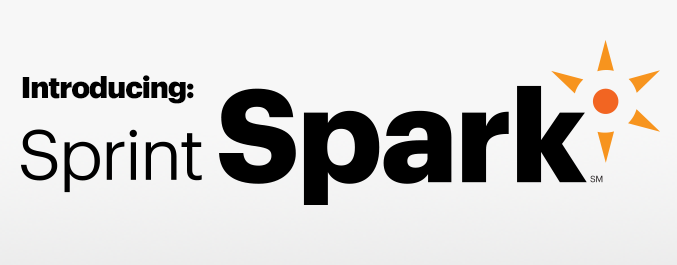Sprint Announces Spark - Its Tri-Band LTE Network
by Brian Klug on October 30, 2013 1:50 PM EST- Posted in
- Smartphones
- Sprint
- LTE
- Mobile

Today Sprint announced the official name for its new tri-band LTE network, Sprint Spark. For those who have been following operator rollouts of LTE in the US, today's announcement from Sprint doesn't come as much of a surprise – it's been planning on running LTE on bands 25, 26, and 41 (1900 MHz, 850 MHz, and 2.5 GHz) for a while now. We've seen a few tri-band handsets pop up recently destined for Sprint, I noted the HTC One max was a tri-band Sprint LTE device in disguise in my review earlier this week, and fellow wireless aficionado Andrew Shepherd caught the LG G2 also packing tri-band Sprint LTE. Today as part of its Spark announcement, Sprint explicitly named the One max, G2, S4 Mini, and Galaxy Mega as its first tri-band smartphones. Sprint's first Spark markets are New York, Los Angeles, Chicago, Tampa and Miami.
Sprint previously was running 5 MHz FDD-LTE on Band 25 which gave it a maximum downstream throughput of 36 Mbps. Today as part of the announcement Sprint has both made LTE rollouts on bands 26 and 41 official, and has stated it has the spectrum for between 50-60 Mbps of downstream throughput. My expectations are one or more 20 MHz TDD-LTE carriers on Band 41 and up to 5 MHz FDD-LTE on Band 26 depending on the market from Sprint.
I'm not entirely certain, but it's likely they're referring to a 20 MHz TDD-LTE carrier on Band 41 for their '50-60 Mbps' claim since that number seems closely aligned with the 63 Mbps downlink, 17 Mbps uplink configuration I've seen given for Qualcomm's Category 3 modems. Moving forward Sprint apparently demonstrated up to 1.3 Gbps of throughput using carrier aggregation and 8x8 MIMO which begins with LTE-Advanced (3GPP release 10). Sprint has gone with Alcatel Lucent, Nokia Solutions, and Samsung Mobile for its Sprint Spark 8x8 Band 41 deployment.
At present the tri-band handsets that have been mentioned don't support those intra or inter band carrier aggregation combinations, or 8x8 MIMO, but rather single carrier operation with the more pragmatic 2x2 MIMO configuration.










33 Comments
View All Comments
DroidTomTom - Thursday, November 7, 2013 - link
How much battery power does it take to run 3 bands? It must be more than a single band.glpdx - Thursday, November 14, 2013 - link
Easy to slam on Sprint. I was my ISP replacement for a few months when I moved to Houston. 250GB/month at 25+Mb/s. Try doing that with Verizon. My first three months w/ Verizon hotspot cost me well over $400 for a handful of GBs. Sprint blew it with WiMax but I think they are doing a great job. It'll take a lot for me to jump ship.c933103 - Monday, May 12, 2014 - link
5+5+20.....some carrier of other countries could have triple as much frequency for their customers without the need of CA...